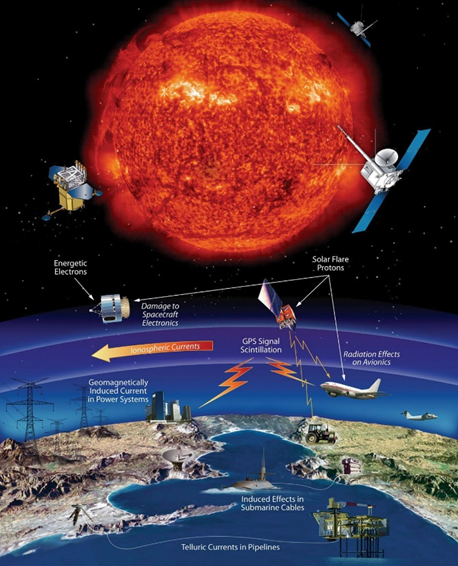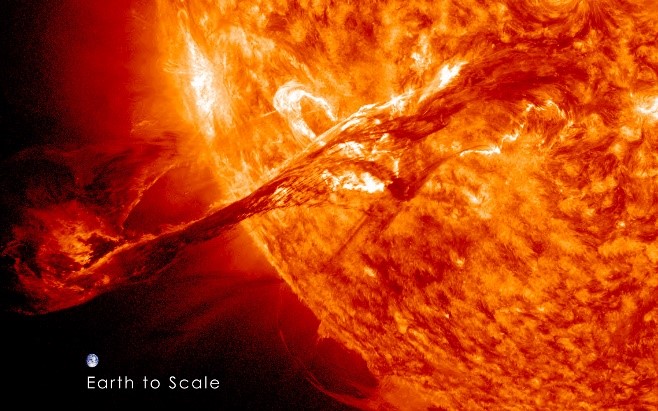Space Weather and Geomagnetic Hazard



Space weather means the state of the space environment and is usually described in terms of the behaviour of energetic electrically charged particles, as well as in changes in electric and magnetic fields. We are mostly interested in conditions in near-Earth space, though space weather can be important throughout the solar system.
The significance of space weather lies in its potential impact on important technologies on Earth and in space, which society increasingly relies on.
These infrastructures include satellites and spacecraft, electrical power grids, metal oil and gas pipelines, radio and telephone communications networks and global navigation satellite systems.
Space weather also has implications for manned space flight, both in Earth orbit and further out into space.
Space weather arises as a result of various dynamic, but relatively short-lived, magnetic field and particle eruptions from the Sun, which are carried in the solar wind and which may interact with the Earth's magnetosphere
Long-term 'space climate' changes, that is, changes over months to centuries, also occur in the near-Earth space environment. These changes are due to longer period (sunspot cycle) variations in the solar magnetic field and also because of variations in the strength of the Earth's magnetic field. However, for the most part we are concerned only with those space weather 'events' that happen on time scales of seconds to a few days.
Dynamic solar-terrestrial events and interactions can be seen in ground-based geomagnetic observations, for example those made by BGS at our UK observatories. Fast, high amplitude variations in geomagnetic measurements caused by space weather are therefore described as posing a 'geomagnetic hazard'. Space weather effects and the associated geomagnetic hazard can be recognised in observatory records dating back over 150 years.
Our active space weather projects, for academic research and for applications that help protect society from the impacts of space weather include
Other active space weather research topics that concern the Geomagnetism Team include
Current BGS 3-day ahead geomagnetic activity forecast

- Global Geomagnetic Models
- Space Weather and Geomagnetic Hazard
- High-frequency magnetometers
- Schumann Resonances
- Geoelectric field monitoring
- Space Weather Impact on Ground-based Systems (SWIGS)
- SWIMMR Activities in Ground Effects (SAGE)
- Geomagnetic Virtual Observatories
- Quantum magnetometers for space weather
- Magnetotellurics
- Publications List
